A traditional symbol of Love and Romance, Osmanthus was used in old wedding customs in Taiwan, when the bride prepared Sweet Osmanthus and Pomegranate pot plants and carried them to her new family. The fragrant plant symbolized True Love and Faithfulness and the fruit tree - Fertility and Peace, and the custom had the meaning of "giving birth to noble children" and "many children and many grandchildren".
Aroma of the Chinese Culture
The word osmanthus is derived from Greek osma, meaning "fragrant", and anthos, meaning "flower".

Osmanthus was introduced to Europe in the middle of 19th century by a French botanist Jean Marie Delavay(1834 - 1895). During his tour in China, Delavay had described over 4000 species of plants, 1500 of which were unknown before. Osmanthus was one of those plants.
Osmanthus fragrans is associated with a number of Lunar legends in China, which makes it symbolic at the time of the Chinese Moon Festival. It is held in September under the symbol of Osmanthus Flower and also called Osmanthus Festival. During the nights of the peak season for the flower, Chinese families used to gather in their yards to eat mooncakes, while the grandmother of the family told traditional stories about the Moon, the sweet Osmanthus and the figures of Chinese legends.
According to those legends, there live on the Moon the Fairy Chang E, a Giant named Wu Gang, a Jade Rabbit which is Chang E's pet, and the huge Osmanthus Tree.
The legend of the Moon Palace says that in ancient times the Jade Emperor held ceremonies to offer sacrifices to the sun in spring and to the moon in autumn. During a midautumn evening, while he was enjoying the moonlight, a magic Taoist priest named Luo invited him to visit the Moon Palace. Luo threw his stick into the air, and immediately a silver bridge from the heavens stretched before them. Across the bridge, there was a magnificent palace. A plaque above the gate read "Guanghangong (Vast and Cold Palace)". By the gate stood a tall, sweet-scented Osmanthus tree and a Jade Rabbit set under the tree mixing a medicine for eternal life. Hundreds of beautifully dressed dancers surrounded them accompanied by melodious music and entertaining the Emperor with delicious cakes shaped like the full moon. Upon returning to the earth, the Emperor ordered cakes modeled after his vision.
The Legend of Wu Gang and Osmonth. Giant Wu Gang made a serious mistake driven mad with jealousy, and was sentensed by the Jade Emperor to the Moon, to the Palace Guanghangong to chop down the huge immortal Sweet Osmanthus growing in the front of the Palace. Cutting down 1500 ft tall tree turned out into a painful and endless task. This tree has magical power and the cut immediately recovers every time. The endless chopping and then recovering goes on for thousands of years and the tree still grows, heavily sheltering the palace beside. The most endearing character in this tale was also the Rabbit, who pounded the elixir of immortality with a pestle and mortar underneath the tree. It is this elixir that helps the tree recovering.
The Legend of the Moon Lady. It was said that Jade Emperor had rewarded master archer Hou Yi with the elixir of life - a sweetly perfumed magic pill. His wife, beautiful Chang E, decided to abandon her husband, she took that pill while he was asleep and gained ability to fly. She flew all the way to the Moon. This, according to the legend, led to exile in a chilly Moon Palace, where she was condemned to a life of solitude. It is said Chang E can be seen roaming the Moon alone. A beautiful fragrant Osmanthus tree in front of the Palace reminds her about her lost love keeping Chang E in deep regret and sorrow. The Jade Rabbit that already lived on the Moon became her pet, and Chang E commanded the animal to take pestle and mortar and pound a magic pill so that she returns to Earth back to her husband. Since the rabbit is very busy with producing elixir of immortality for the Osmanthus tree, she seem to be still waiting for her order to be filled...
The Plant
Osmanthus fragrans is evergreen tree or shrub with a moderate growth rate, plants grow in China for thousands of years. It has glossy dark green leaves with toothed edges and Butter-Yellow flowers usually hidden by foliage, with a strong fragrance that can be smelled from a distance. There is a famous city called GuiLin which means "fragrant forest", referring to the large number of fragrant Osmanthus trees located in the city. Its scenery is reputed by many Chinese to be the "finest under heaven".
There are over 20 types and cultivars of the Sweet Osmanthus: Apricot Gold, Silver-White, Four Seasons (creamy-white flowers),Dan(red flowers), and others, with their colors varying between yellow, white and reddish. The Apricot Gold Osmanthus starts blooming in September-October which continues one week, The variety "Four Seasons" blooms on and off year round and has up to 4 blooming activity periods, hence the name of the variety.
Uses
Osmanthus fragrans is valued for its delicate fruity-floral aroma. The flower (know as Gui Hua) is used in perfumery and foods, such as sweet osmanthus wine, tea, sugar, juices, cakes and sauces.
Tea

Osmanthus is especially valued as an additive for tea and other beverages in the Far East. The Chinese discovered that the Osmanthus can be used to enhance the natural fruitiness of some of their finest green and black teas. The fresh flowers of osmanthus are sometimes mixed in with partially fermented green tea to produce a lovely aromatic tea.
Wine
Uncle Feng's Osmanthus Wine(know as GuihuaJiu),produced from rice-wine and flavored with sweet osmanthus flowers. It is distilled, but typically has an alcohol content less than 45%.The wine is traditionally consumed during the Mid-Autumn Festival(a harvest festival celebrated by ethnic Chinese and Vietnamese people), light yellow,a sweet tasting and with a strong fragrance that can be smelled from a distance.

Product Origin: Yangshuo China
Brand Name: Uncle Feng
Supply Ability: 10tons/year
Details: It is made from well-chosen flowers in bud, and adopting traditional technology to brewing. Clear, transparent, rich, mellow, aromatic, long after taste.
How wine is made: An illustrated guide to the winemaking process, by Uncle Feng
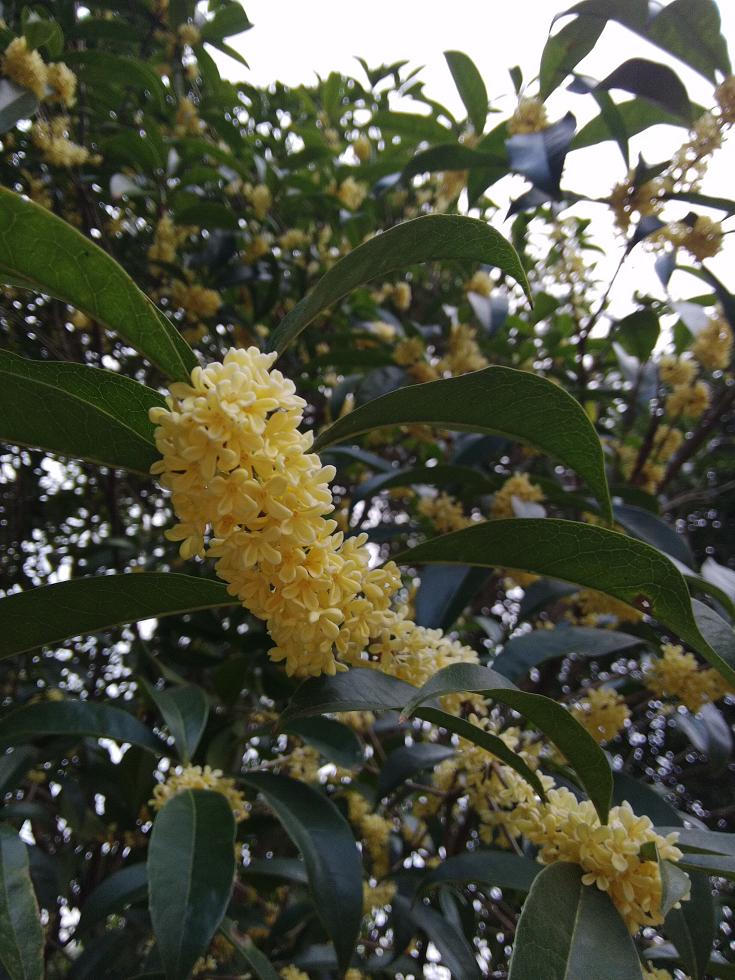
step1:Harvested flower
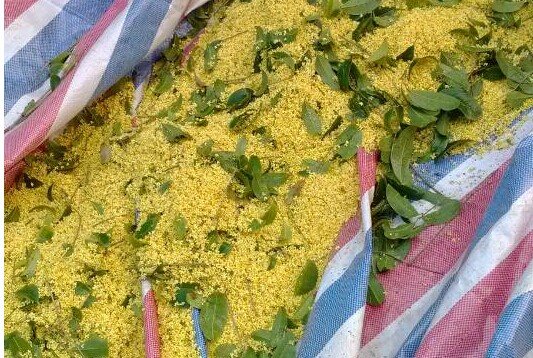
Osmanthus starts blooming in September-October,Not ripe enough, or too ripe, and the wine will suffer. The Osmanthus as they are harvested contain the potential of the wine: you can make a bad wine from good Osmanthus, but not a good wine from bad Osmanthus.
Teams of pickers head into the gardens. This is the exciting time of year, and all winegrowers hope for good weather conditions during harvest. Bad weather can ruin things completely.
step2:Clean the flowers and mix sugar


The jar with this mix should be sealed for a few weeks, and then used for brew.
step3: Infunde rice-wine,soaking
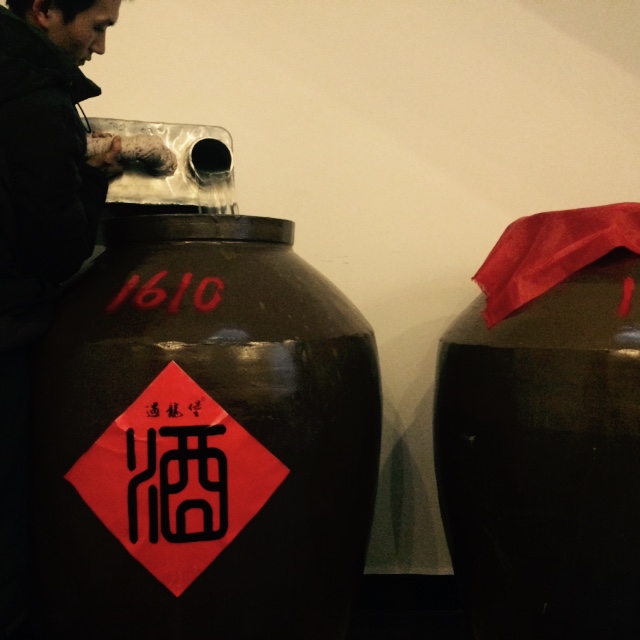
step4:Seal
after half-year,Rice wine aging and become osmanthus wine.
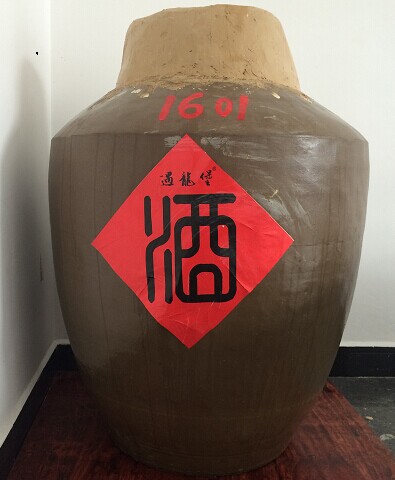
step5: Decant the mix wine
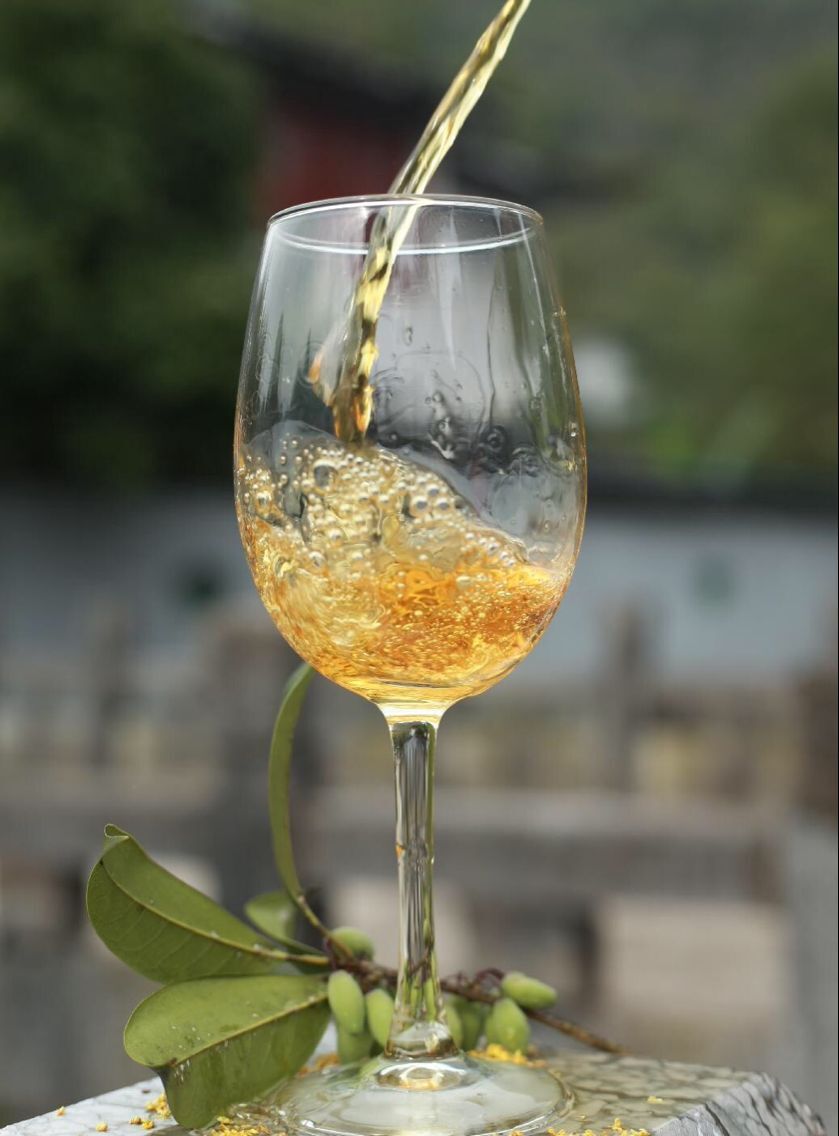
The wine with colors varying from pale yellow to yellow.
Cooking
The dried flowers are also used in other sweet dishes such as sauces, lotus seed soup and steamed pears.
Chinese Moon Cakes. Every Chinese holiday is accompanied by some sort of special food. Moon Cakes are eaten on Chinese New Year which is based on the Lunar calendar (and the little treats look like the moon). They are also eaten as part of an autumn, harvest type celebration which falls on the 15th day of the 8th lunar month. On the Moon Festival, people eat moon cakes, a kind of cookie with fillings. Sweet fillings are made of sugar, Walnuts, sesame, osmanthus flowers,sweetened tangerine peel, bean paste, or jujube paste. The surface of the food is patterned with clouds, the moon, the rabbit. Some cakes will be sent to absent ones or saved at home for them.
Medicine
Osmanthus fragrans flowers are widely used in Chinese medicine. There are many medical products made out of sweet osmanthus buds, leaves and bark. They are said to protect against coughs and used to flavor other medicines, and in cosmetics for the hair and skin.
An essential oil obtained from the flowers is used as an insect repellent for clothes. They are also added to herbal medicines in order to disguise obnoxious flavors.